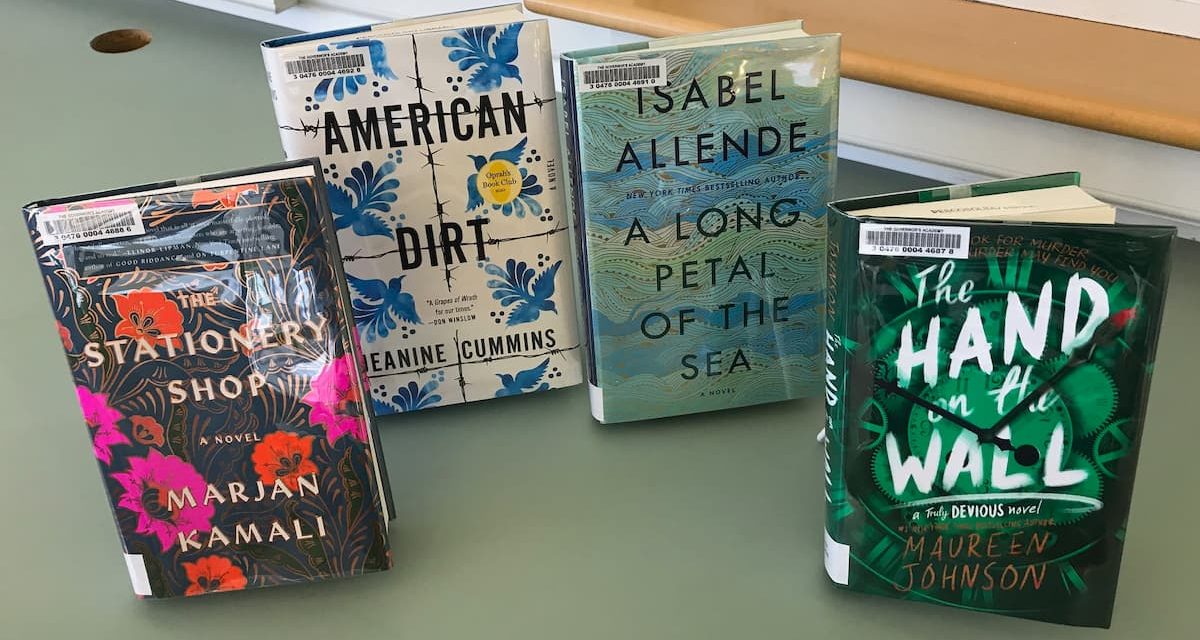Immigration. Illegal aliens. Caravans. These are all words or phrases that have been used to refer to people coming from other countries, usually through our southern border.
We were told during the Trump years that they are a group of bad people – “bad hombres” – and that we should be very afraid for our lives and for our way of life.
Many of us knew all along this was not true. We knew most of the people trying to gain entry to the USA were looking for a better way of life. Yet, negative images can easily pop into some people’s thoughts when they hear about the numbers of immigrants entering our country.
Enter the book “American Dirt” by Jeanine Cummins, which triggered strong reactions when it was first released in spring 2020.
“American Dirt” plot is about escaping danger in Mexico
This book centers around Lydia, a wife, mother, and business owner from Acapulco. She and her young son are trying to escape the Mexican cartel and get to the United States. Through Lydia’s eyes, we see how difficult this journey is. We experience the grief she feels for the events that lead to her needing to leave the city, country, and way of life she’s grown up with. We hear of the hope she has for her son and his future. And we share in the fear of what will happen if she stays.
Lydia and her son go through things most of us cannot imagine. Things I take for granted – talking freely with others, the clothes I wear, and going to the store, to name a few – are not available for Lydia. I was able to put myself in Lydia’s shoes throughout the book, and it was exhausting.
Lydia also does not fit the narrative many Americans have heard when it comes to “immigrants.” She owns her own bookstore in Mexico. She’s happily married to a journalist and has what we would call a typical middle-class lifestyle. She has a large and unified extended family. Yet, she’s running for her life.
This contradiction is one reason why so many were upset by this book. A lot of people from the Hispanic community were upset that a woman labeled as “white” received so much acclaim for a book about brown-skinned people. A Vulture article from February 2020 said, “the book has been called ‘stereotypical,’ and ‘appropriative’ for ‘opportunistically, selfishly, and parasitically’ telling the fictional story of a Mexican mother and son’s journey to the border.
I’m not here to defend or criticize Cummins for writing this book. But as an avid reader, I’m troubled by the idea that a white person should not be allowed to write a book of fiction from the perspective of someone of a different heritage.
To take an intersectional approach, a lot of male authors have written some great books from the perspective of women. One such author, John Green (“The Fault in Our Stars”, “Paper Towns”, “Looking for Alaska”, to name a few) appears on lists of male authors who successfully write female protagonists. I’ve not seen Green publicly called out in the same manner that Cummins was.
Why? Is Jeanine Cummins not “brown enough”? Though critics labeled her “white,” she is actually of Puerto Rican descent. Does she herself have to have run for her life through our border in order to write a book of fiction about a mother doing just that?
Think about how this mentality would play out if applied to all fiction: no more of the fantasy genre, since none of us have experienced the subjects of fantasies. What about historical fiction, particularly those heaving bosom books? No more. Murder mysteries? I surely hope one doesn’t need to commit a murder in order to write about murderers!
Cummins succeeds in immersing us
Before anyone accuses me of being tone deaf, I do understand that writing a murder mystery can in no way be equated to cultural appropriation. But why can’t we appreciate a book for what it is, and then move on? Why can’t we use that book as a stepping stone to approach its topic and then delve deeper?
My husband is Hispanic and has a large family. My children are half Hispanic. But I could not possibly learn from them what I learned from “white” Jeanine Cummins. I’ve never had to fear for my sons’ lives in the way that Cummins’ main character, Lydia, had to fear for hers. I’ve never had to think about leaving everything I know, just to stay alive and protect the lives of my husband and children.
It’s a testament to Cummins’ skills as a storyteller that I was able to so completely immerse myself in Lydia’s story. It’s a testament to her skills as a researcher that I learned so much – things I could not actually learn from my first-generation and second-generation, much more brown-skinned husband and sons.
This book opened a door in my soul. Because of it, I want to hear more from those who are emigrating here. I want to know more about ”The Beast,” the train many immigrants use to get here. I want others to feel more empathy for those forced to leave their country in search of a better life.
If it takes reading a book like “American Dirt” to get those empathetic juices flowing, I’m all for it. Regardless of how dark the author’s skin is.
(cover photo courtesy of Pesky Librarians, Flickr)


